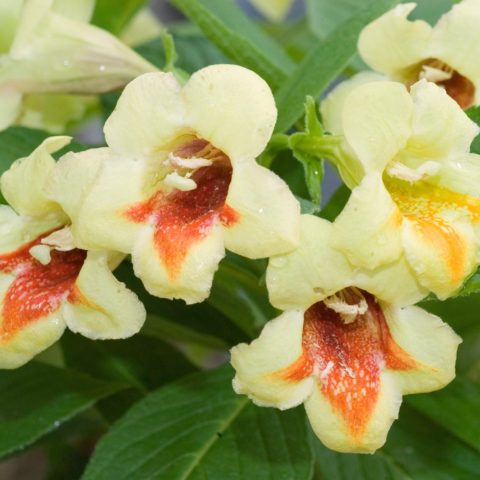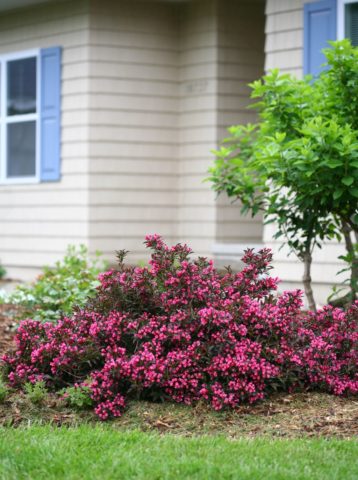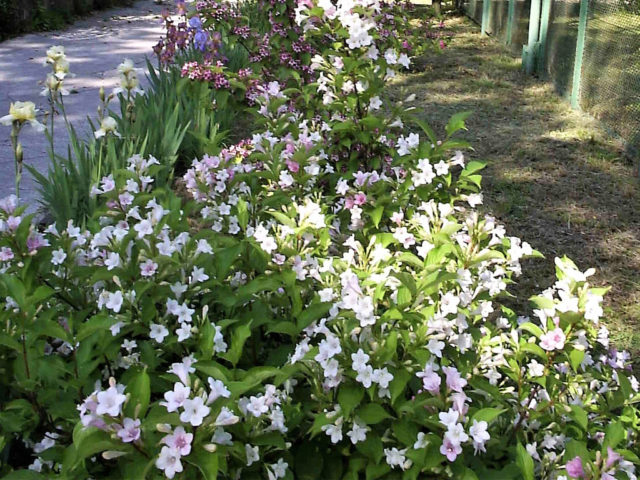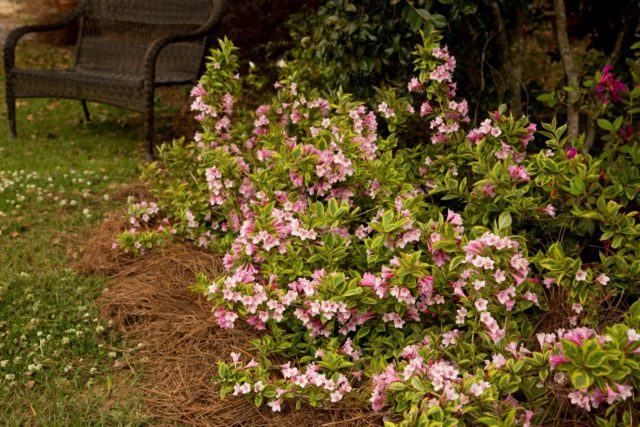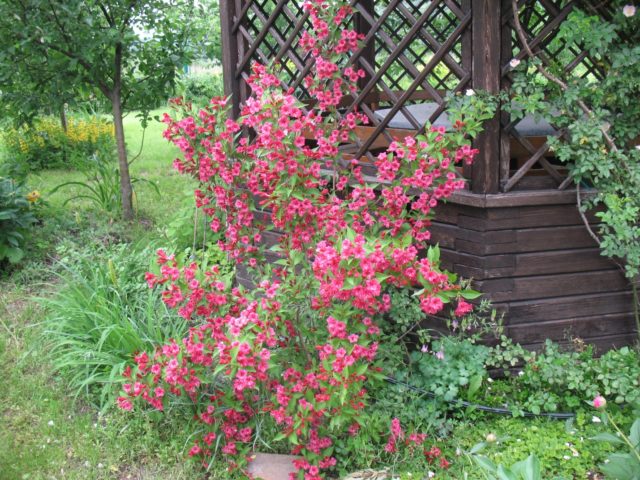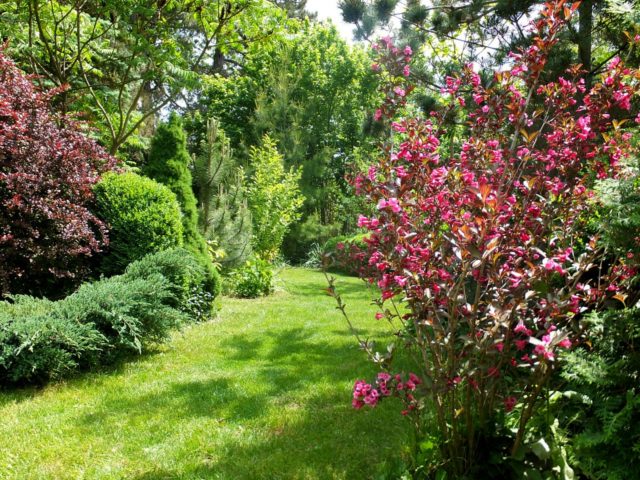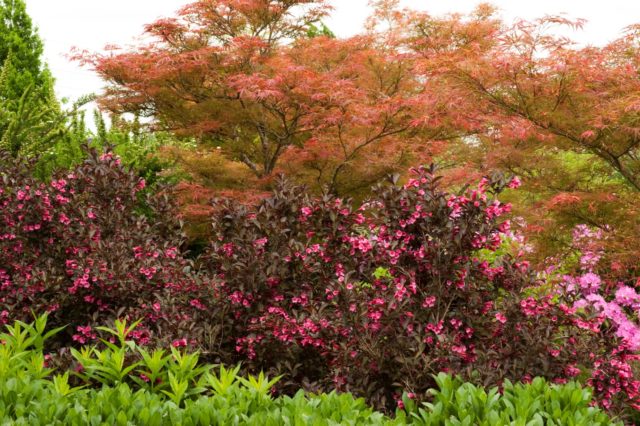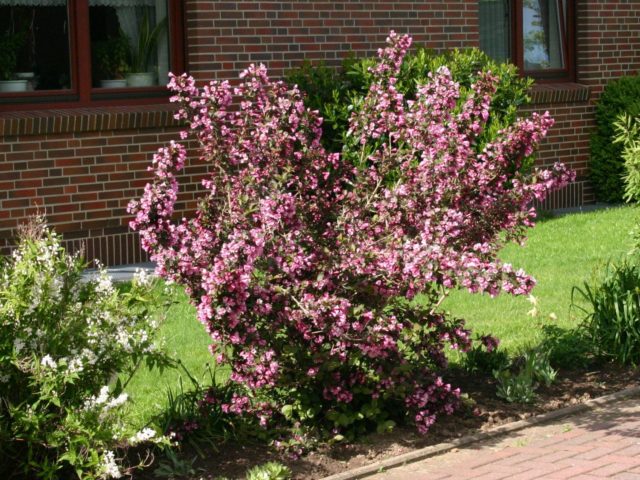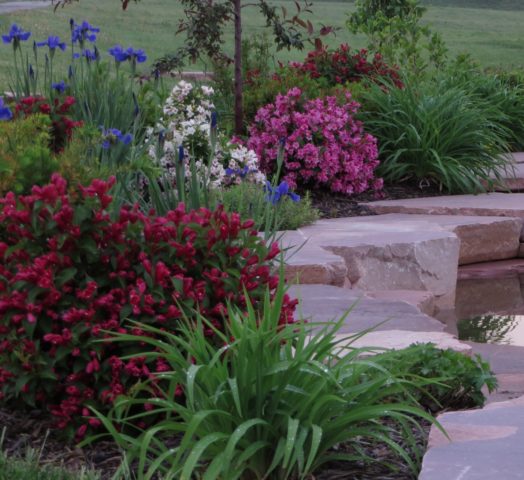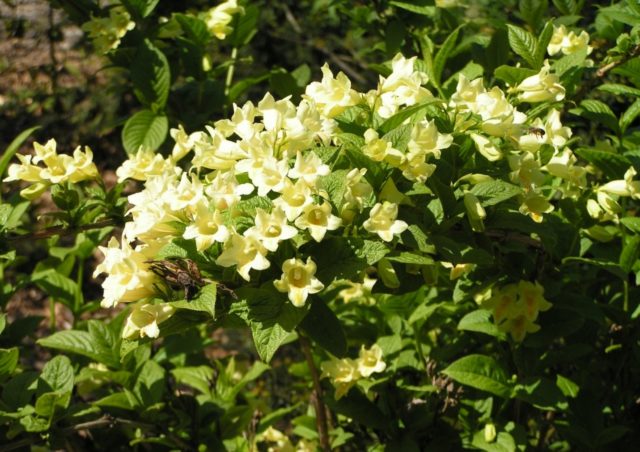Content
Weigela Middendorf is a representative of the Honeysuckle family; in terms of flowering time, it replaces lilacs. In its natural environment, the plant is found in the Far East, Siberia, Primorsky Territory, Sakhalin. Weigela is represented by numerous varieties with various colors and sizes of the bush. They grow a culture for landscaping the territory, use it in landscape design.
Description of Weigela Middendorf
In the middle of the 19th century, Weigela Middendorf was included in the botanical reference book; the plant got its name in honor of the secretary of the Petersburg Academy of Sciences, researcher and naturalist A. Middendorf. Currently, the shrub in the wild is on the verge of extinction, it is listed in the Red Book and is under state protection. In its natural environment, the plant is found in the undergrowth of coniferous forests, on the edges of cedar trees and shrubs, coastal areas and on rocky slopes.
Weigela Middendorf (pictured) is a perennial deciduous shrub. In Russia, the variety began to be grown in 1950 in botanical gardens. He successfully adapted to the Altai climate, recommended for breeding in the Leningrad, Moscow region, Western Siberia, Altai. The frost-resistant variety of Middendorf, without freezing the root system, tolerates a decrease in temperature to -38 0C. Weigela is also characterized by high winter hardiness, changes in spring temperature do not affect the vegetation of the plant. The culture resists drought safely. Deficiency of moisture tolerates much better than excess.
Description of Weigela Middendorf:
- The variety grows in the form of a multi-stem shrub up to 1.5 m tall, the crown is oval, growing to the sides. The culture is intensely leafy, perennial shoots are dark brown in color.
- Leaves are opposite, lanceolate, pointed upwards. The surface is finely pubescent with a pronounced network of veins, bright green, petioles are absent.
- The root system of Middendorf's weigela is slightly deepened, of a mixed type, the root circle is wide, with a volume of 1.5 m.
- Seeds are small bolls, equipped with a lionfish, are formed in the fall after the second flowering.
Weigela Middendorf planting material is suitable for generative reproduction. The annual growth of the plant is insignificant, by the age of five the shrub reaches the end point of growth and is considered an adult. The biological life span of a weigela is 55 years.
How Weigela Middendorf blooms
The variety belongs to crops with an average flowering period, a distinctive feature of the Middendorf Weigela, which makes it attractive to gardeners - double flowering. The first wave begins at the end of May, the next in August. The flowering period is 4 weeks. Therefore, the shrubs look aesthetically pleasing throughout the season.
The first buds are formed at the top of last year's stems, at the end of summer on the shoots of the current year. Weigela blooms with single large flowers, less often they are collected in inflorescences of 2-3 pcs. Funnel-shaped or tubular in the form of a bell. The color during flowering changes from bright yellow to light lemon.A bright raspberry blotch in the middle of the throat makes the flower decorative.
Application in landscape design
Due to the decorative habit of the Weigel Middendorf during long flowering, it is widely used for decorating personal plots and landscaping urban recreation areas. An unpretentious plant requires minimal care, the only conditions for abundant flowering - the shrub must be in an open area, periodic shading is permissible.
All varieties of weigel with different colors are used to decorate the landscape. A few examples of the use of Middendorff's weigela in design are presented below:
- Imitation of a wilderness corner in a city park.
- As a tapeworm in the center of the flower bed against the wall of the building.
- Along the edges of the garden path.
- Near the garden bench.
- Slope decoration.
- Near the wall of the gazebo.
- In composition with conifers.
- As a hedge.
- Foreground decor.
- To decorate the shores of an artificial reservoir in rockeries.
Weigela varieties look harmonious in any composition: in mass planting and as a single shrub.
Breeding methods
According to gardeners, weigelu Middendorf can be diluted in any convenient way:
- Seeds... Sowing seeds in containers is carried out in April, after 3 weeks shoots will appear. The sprouts are kept in the container until next spring, then they are placed on the site.
- Layers... The lower branch is bent to the ground, fixed, covered with soil. The buds take root in about 1 month. In the South, rooted material can be cut and planted before winter; in temperate climates, planted in spring.
- Root shoots... The fastest way.
- Cuttings... The material is cut from last year's shoots, about 15 cm from the central part. Harvesting time - August, the material hibernates in containers with soil until spring.
Planting and caring for the middendorf weigela
Weigela Middendorf is an unpretentious plant that gets along well with any representative of the flora, except for a dense planting of large-sized plants, whose dense crown creates a shadow. In such conditions, one should not expect secondary flowering from the weigela.
Recommended timing
The best accommodation option on the weigela site is early spring, late March - early April. Terms are conditional, for each climatic zone the landing time is individual. The ground should warm up to +8 0C, after planting there should be no frost. Planting Middendorf Weigela in autumn in regions with cold winters can kill the plant.
Site selection and soil preparation
Adequate light is vital for the Weigela Middendorf. In the shade, the shrub loses its decorative effect. Shading of the area is allowed for 2-3 hours a day. A suitable place for the Middendorf Weigela will be the slopes of the ravines, open areas in the garden, the south side of the building. When choosing a place, take into account that the culture does not tolerate drafts.
The composition of the soil at the site of Middendorf's weigela planting should be neutral or slightly acidic, light, nutritious, drained. The plant will react calmly to a dry root coma, waterlogging can cause rotting. Lowlands and wetlands are not suitable for the Middendorf Weigela. Before the spring planting in the fall, they dig up a plot, add organic products, urea, ash.
How to plant correctly
Before planting, a nutrient soil is prepared, consisting of equal parts of sand, humus, peat and soil from the planting site. Fertile land is divided into two equal parts. Before being assigned to a permanent place, the root of the seedling is treated with an antifungal agent, dipped in "Kornevin" for 4 hours.
Landing:
- They dig a hole 50 * 60 cm in size, 70 cm deep.
- Gravel of a medium fraction is laid at the bottom, the layer should be at least 10 cm.
- A fertile mixture is poured, a cone-shaped hill is made in the center of the pit.
- The root is installed on the embankment, covered with the remains of the soil.
- Tamped, watered.
For mass planting, the interval between Middendorf weigela seedlings should be 1.5 m.
Growing rules
Weigela Middendorf requires certain conditions for care, especially in the first three years of growth, and then annually during flowering.
Watering
The adult Weigela Middendorf is calm about the lack of precipitation. Watering is carried out at the time of budding and further flowering, the frequency is 1 time in 6 days. For the second flowering, watering depends on precipitation. A large amount of moisture during autumn flowering can give a negative result, the flowers do not have time to fully open, they begin to fall off. Young Middendorf seedlings are watered periodically with a small amount of water. The soil should be slightly damp.
Top dressing
The first feeding of weigels is carried out immediately after the snow melts. Complex fertilizers are scattered around the bush, urea or potassium salt will do. At the time of the formation of flower buds, weigel give superphosphate. Organic matter is introduced before the second flowering.
Loosening, mulching
After each watering of young seedlings, the root circle is loosened, along the way weeds are removed. Loosening is carried out shallowly in order to raise the top layer by about 5 cm. Adult plants do not need loosening. Weeds must be removed, this measure prevents the spread of aphids.
Weigela Middendorf is mulched immediately after planting. In the fall, the layer is increased, in the spring it is renewed. It is recommended to use shredded tree bark as mulch. The material retains moisture well, looks aesthetically pleasing on the site.
Pruning, crown shaping
Weigela Middendorf is compact, not spreading, has a natural decorative habit, therefore, the shrub is often left in its original form. Sanitary pruning is carried out, dry areas and shoots that have died during the winter are removed in the spring. Every three years, the culture is rejuvenated by cutting out 3-4 old branches. Weigela Middendorf responds well to pruning shoots, keeps its shape for a long time, therefore it is used by landscape designers.
Preparing for winter
Weigela Middendorf is characterized by increased winter hardiness. An adult plant, after 6 years of growth, does not need a crown cover; abundant watering and a layer of mulch from straw or needles will be enough. You can cover the root circle with spruce branches. Young bushes of the Middendorf variety need thorough wintering measures:
- The plant is spud.
- Cover with a layer of mulch.
- The crown is collected in a loose bundle, carefully fixed with a rope.
- I bend it to the ground, install arcs, stretch the covering material.
From above, the structure is covered with spruce branches, in winter they cover it with a snowdrift.
Pests and diseases
Weigela Middendorf can hardly be called resistant to infections. The plant reacts painfully to the slightest deviations from the required norms, for example, too high humidity of the air and soil. Spotting develops on the leaves, rot in the form of growths on the roots. If a juniper is planted next to a weigela, rust appears on the foliage. Eliminate all manifestations of fungal and bacterial infection with Bordeaux liquid.
Parasitize the culture:
- aphid;
- caterpillars;
- thrips;
- spider mite.
Eliminate pests of Middendorf "Keltan", "Nitrofen", "Rogor". To exclude the bear and the larvae of the May beetle, "Karbofos" or "Aktaru" is introduced under the root.
Conclusion
Weigela Middendorf is a perennial deciduous shrub. The plant is widely used in the design of sites, urban recreation areas, landscaping of neighborhoods. It is attractive for design by a beautiful dense crown and the possibility of two-time flowering throughout the season. The culture is frost-resistant, it is grown in areas with cold climates. It safely tolerates drought, weigela can be found in Central Asia and the North Caucasus.
Testimonials

